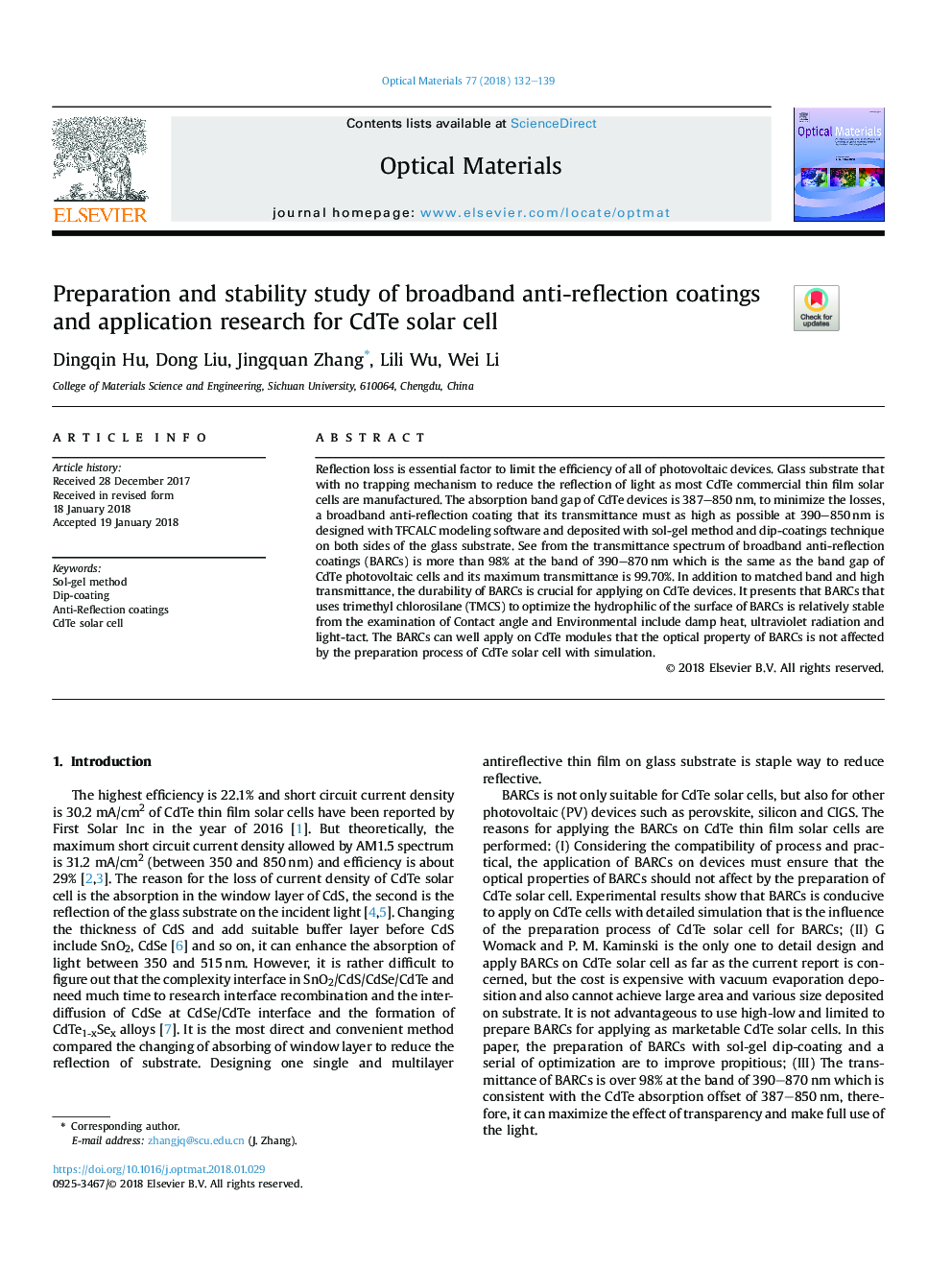| Article ID | Journal | Published Year | Pages | File Type |
|---|---|---|---|---|
| 7907237 | Optical Materials | 2018 | 8 Pages |
Abstract
Reflection loss is essential factor to limit the efficiency of all of photovoltaic devices. Glass substrate that with no trapping mechanism to reduce the reflection of light as most CdTe commercial thin film solar cells are manufactured. The absorption band gap of CdTe devices is 387-850â¯nm, to minimize the losses, a broadband anti-reflection coating that its transmittance must as high as possible at 390-850â¯nm is designed with TFCALC modeling software and deposited with sol-gel method and dip-coatings technique on both sides of the glass substrate. See from the transmittance spectrum of broadband anti-reflection coatings (BARCs) is more than 98% at the band of 390-870â¯nm which is the same as the band gap of CdTe photovoltaic cells and its maximum transmittance is 99.70%. In addition to matched band and high transmittance, the durability of BARCs is crucial for applying on CdTe devices. It presents that BARCs that uses trimethyl chlorosilane (TMCS) to optimize the hydrophilic of the surface of BARCs is relatively stable from the examination of Contact angle and Environmental include damp heat, ultraviolet radiation and light-tact. The BARCs can well apply on CdTe modules that the optical property of BARCs is not affected by the preparation process of CdTe solar cell with simulation.
Related Topics
Physical Sciences and Engineering
Materials Science
Ceramics and Composites
Authors
Dingqin Hu, Dong Liu, Jingquan Zhang, Lili Wu, Wei Li,
